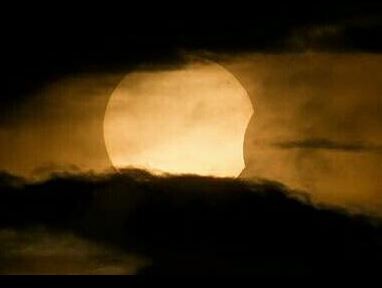
Another celestial event of 2013, a penumbral lunar eclipse, will occur on Friday night.
The moon will pass through Earth's shadow in a lunar eclipse that will be visible to skywatchers in several places.
During Friday's eclipse part of the moon will pass through the outer edge of the Earth's shadow or penumbra. In a full eclipse, the moon turns into a reddish or grey shade depending on the Earth's atmosphere, but in penumbral lunar eclipse the moon will darken very marginally.
"The effect of such a "penumbral eclipse" will be subtle compared to the dramatic spectacle of a total lunar eclipse, but it's still worth craning your neck skyward," experts stated on Space.com
"Unusual shading on the southern half of the moon should be fairly plain," Sky and Telescope's Alan MacRobert wrote. "Look for the penumbral shadow to move from (celestial) east to west across the disc. You might be able to detect lesser traces of penumbral shading for about 45 minutes before and after mid-eclipse."
In North America and South America, the maximum eclipse will take place during moonrise. Observers in Africa, Europe and parts of Asia can view the celestial phenomenon during midnight on Friday (18 October).
In India, the celestial phenomenon will begin at around 3.20 am and will last for around four hours. The maximum eclipse will be seen at around 5.20 am and it will end at around 7.19 am, DNA reported.









